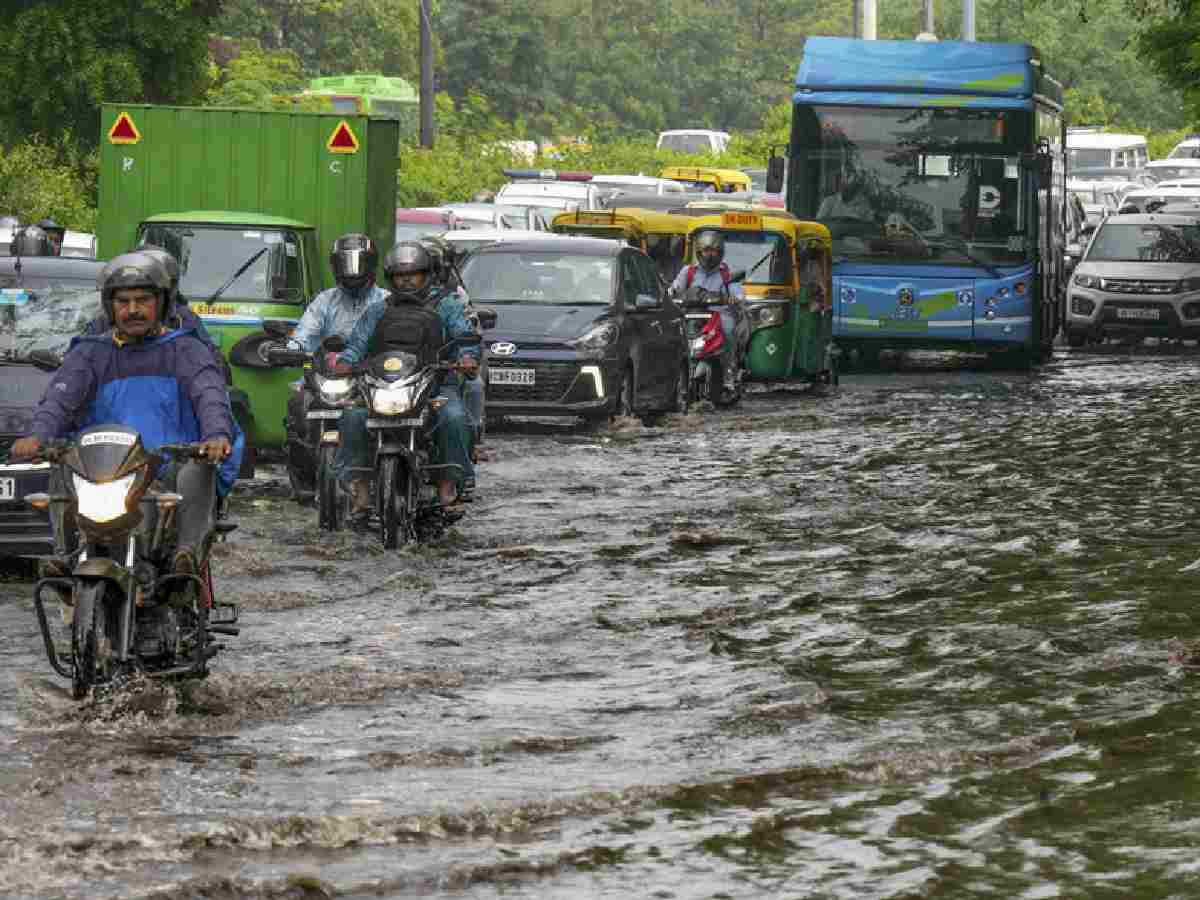The national capital has experienced 15 straight days of rainfall, ranging from light to heavy showers, starting from August and continuing through Friday, as reported by the weather department.
Data from the India Meteorological Department indicates that Delhi received rain every day between August 1 and Thursday.
Light to moderate rainfall was also forecasted for various parts of Delhi on Friday night.
Between 8:30 am on August 15 and August 16, Safdarjung, Delhi’s main weather station, recorded 13.6 mm of rain, Palam saw 28.5 mm, Ayanagar 18.6 mm, and Narela 9.5 mm.
On Friday, Delhi’s maximum temperature reached 35.2 degrees Celsius, 1.4 degrees above normal, according to the weather department. The humidity level was recorded at 70 percent by 5:30 pm.
The Municipal Corporation of Delhi’s central control room received seven complaints each of waterlogging and fallen trees between 6 am and 6 pm, based on data from the civic body.
Waterlogging was reported in areas like Palam, Rohini, and Adarsh Nagar, while incidents of fallen trees occurred in Dwarka, Ashok Vihar, Malviya Nagar, and Lajpat Nagar.
Also Read: Delhi: Clogged city drains leave the Capital flooded
The city is expected to remain under a ‘green zone,’ with no advisories necessary for the next six days.
Delhi experienced a humid morning on Saturday, with a minimum temperature of 27.2 degrees Celsius, which is normal for this time of year, as per the India Meteorological Department.
Humidity reached 92 percent at 8:30 am.
The weather department predicts a generally cloudy sky with a chance of very light rain during the day. The maximum temperature is expected to hover around 35 degrees Celsius.
In the 24 hours leading up to 8:30 am on Saturday, Delhi received 5.7 mm of rain.
On Saturday morning, Delhi’s air quality was classified as “satisfactory,” with an Air Quality Index (AQI) of 66 at 9 am, according to the Central Pollution Control Board.
An AQI between zero and 50 is considered “good,” 51 to 100 “satisfactory,” 101 to 200 “moderate,” 201 to 300 “poor,” 301 to 400 “very poor,” and 401 to 500 “severe.”





